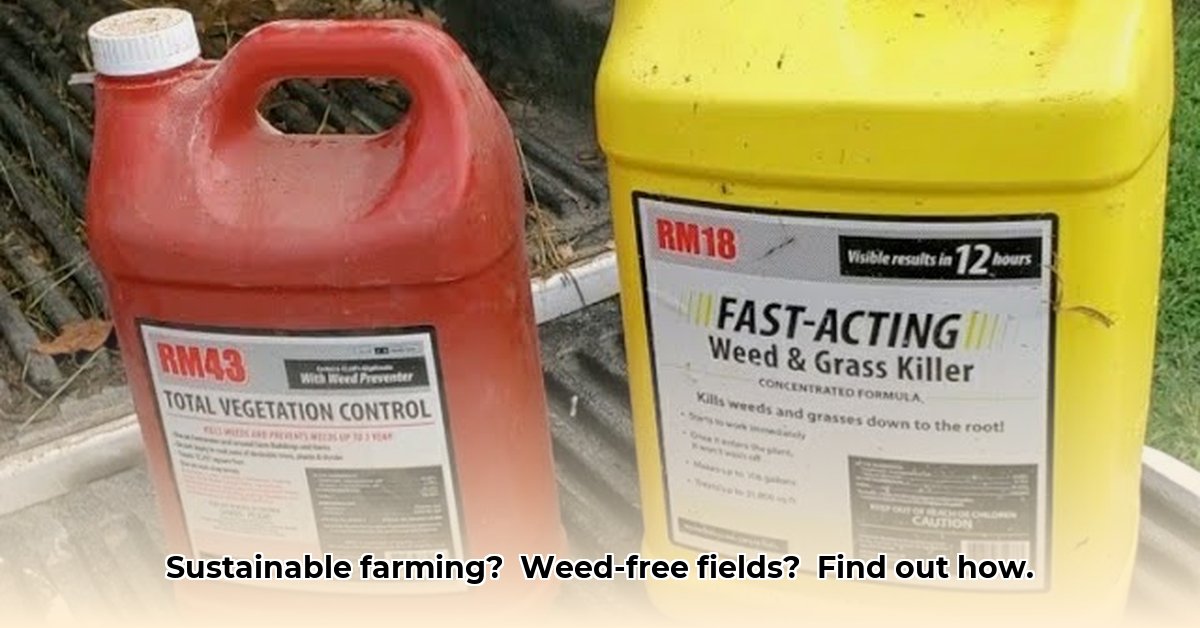
Brush Killer Selection for Sustainable Agriculture: Bayer Advanced vs. BioAdvanced
Sustainable farming necessitates careful consideration of weed control methods. This article compares two popular brush killers available at Tractor Supply—Bayer Advanced and BioAdvanced—analyzing their efficacy, environmental impact, and cost-effectiveness to help farmers and land managers make informed decisions. The long-term environmental effects of both products require further research, highlighting the ongoing need for scientific investigation in this field.
Product Comparison: Bayer Advanced vs. BioAdvanced
Both Bayer Advanced and BioAdvanced effectively control various weeds, including notoriously difficult species like poison ivy. However, significant differences in formulation and application impact their respective environmental profiles and user experience.
Bayer Advanced: This product is a concentrate, demanding precise mixing with water before application. While this offers flexibility in adjusting strength for different weed types and densities, inaccurate mixing can compromise effectiveness or lead to unintended environmental consequences. Improper mixing can also result in product waste.
BioAdvanced: Offered as a ready-to-use solution, BioAdvanced simplifies application, reducing the risk of incorrect mixing and associated waste. The convenience, however, comes at the cost of reduced flexibility in adjusting concentration. This might lead to using more product than necessary in some situations.
Here's a summary table comparing key features:
| Feature | Bayer Advanced | BioAdvanced |
|---|---|---|
| Formulation | Concentrate (requires mixing with water) | Ready-to-use |
| Application | Requires precise mixing; offers concentration flexibility | Ready to spray; simpler application; less flexibility in concentration |
| Environmental Impact | Potential for overuse and runoff if not carefully applied; requires further research. | Less potential for overuse; requires further research to determine the full environmental impact. |
| Cost-Effectiveness | Potentially more cost-effective per acre with precise application; potential for waste with inaccurate mixing | Higher initial cost per unit; potentially less waste if used correctly. |
Actionable Recommendations: A Step-by-Step Guide
Choosing the best brush killer depends on individual needs and circumstances. This step-by-step guide helps navigate the decision-making process:
Assess Your Needs: Identify the target weeds, the area needing treatment, your budget, and any nearby sensitive plants or ecosystems requiring protection. Consider the soil type and water drainage patterns on your land.
Consult Safety Data Sheets (SDS): Thoroughly review the SDS for each product (easily accessible online) understanding active ingredients, potential hazards, and safe handling practices.
Research Environmental Impacts: Seek independent research on the long-term effects of both products on soil health, water quality, and local wildlife. Consider the potential for herbicide runoff and its consequences.
Conduct a Small-Scale Trial: Before large-scale application, test both products on a small representative area. Monitor efficacy and note any unintended environmental effects on flora and fauna. Document your findings.
Choose Wisely: Based on your assessment, research, and trial results, select the product that best aligns with your needs and sustainability goals. Prioritize products with transparent labeling and a proven track record of responsible environmental stewardship. Remember that minimizing herbicide use remains a priority.
Apply Carefully: Regardless of the chosen product, precise application is crucial for efficacy and minimizing environmental impact. Follow the manufacturer's instructions meticulously, paying close attention to application rates, timing, and weather conditions to protect beneficial species.
Sustainable Weed Management: Beyond Chemical Herbicides
Sustainable weed management involves integrating chemical control with alternative methods:
Mechanical Weeding: Physical removal of weeds using tools such as hoes, cultivators, or weed whackers. This is especially effective in small areas and for targeted weed removal.
Cover Cropping: Planting crops like clover or rye to suppress weed growth. This method improves soil health while reducing weed competition.
Biological Control: Introducing natural enemies (e.g., insects) of specific weeds. This requires careful planning and expertise to avoid unintended ecological consequences.
Mulching: Applying organic matter (e.g., wood chips, straw) to the soil surface to suppress weed growth. This also improves soil moisture retention and fertility.
Integrating these strategies with chemical control, when necessary, promotes a more holistic and environmentally responsible approach to weed management. The best approach will vary depending on the specific context.
Conclusion: Striving for Balance in Sustainable Agriculture
Sustainable farming requires a balanced approach to weed control. While chemical herbicides can be effective, their use should be informed, responsible, and integrated with other sustainable practices. Ongoing research into the long-term environmental impacts of products like Bayer Advanced and BioAdvanced is crucial for responsible decision-making and responsible stewardship of agricultural lands. A combination of strategies is key to achieving truly sustainable weed management.